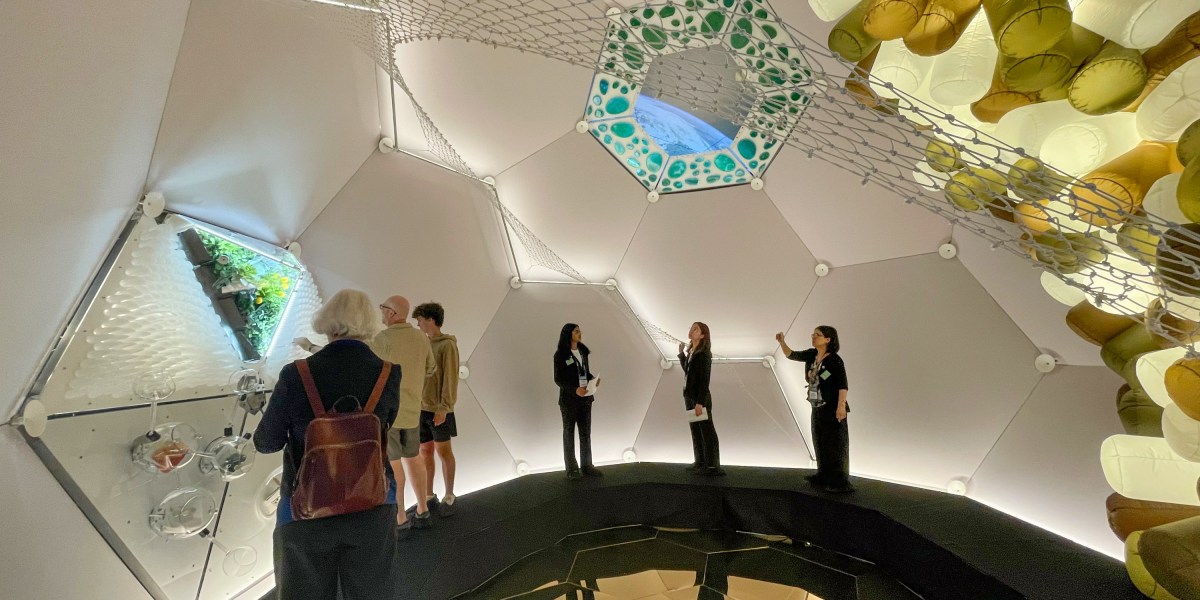There’s another way to make something compact for launch: inflate it in orbit. NASA has already done this—its experimental BEAM habitat, which is connected to the ISS, launched in 2016 and has stored cargo. Sierra Space wants to make inflatable habitats as large as a three-story building, although they’ve yet to test these designs in space.
Ekblaw sees the TESSERAE habitat and inflatables as complementary technologies. TESSERAE’s hard outer shell should better protect astronauts from space debris, such as micrometeoroids. And the TESSERAE habitat is more easily repaired than an inflatable, she says, because tiles can simply be switched out. That’s not true for inflatables, where a tear may mean a complicated patch job or replacing the entire habitat. “I’m very pro-inflatables,” Ekblaw says. “I think the answer should be both, not either.”
Design challenges
Aurelia Institute envisions that, once constructed, the TESSERAE habitat will be quite different from what we usually see at the ISS: not just functional, but also fun, accessible, and comfortable.
The design contains whimsical elements informed by dozens of interviews with astronauts. One looks like a massive inflatable sea anemone that sticks out of the wall. But it’s actually a couch—lying down in space isn’t easy, so astronauts could, theoretically, wedge themselves between inflatable branches and get cozy.
Scaling up the technology will be difficult, though. Oliver Jia-Richards, an aerospace engineer at University of Michigan, isn’t sure whether Aurelia’s combination of magnets and sensors will be enough to get larger tiles to self-assemble. Moving things in space with precision typically requires a propulsion system. “If they accomplished this, it would be a breakthrough in terms of how we do this,” says Jia-Richards. Ekblaw says she’s not ruling out the need for propulsion.
The structures the tiles can currently create are also not airtight, and therefore not human-ready, Ekblaw notes. Her team may add latches at the edges of the tiles, which would knit them together more closely. Another idea is to inflate an airtight balloon in the middle of the space for people to live within. In that case, the tiles would become simply an exoskeleton to an interior, pressurized bladder.
The team just got approved by NASA to send more small tiles up to the ISS next year. This time, they’ll send up about 32 (rather than just seven ) and see if they can build an entire spherical structure on a small scale.
This story was updated on 9 August with several corrections, including the location of the co-working space and details regarding the self-assembly process.

